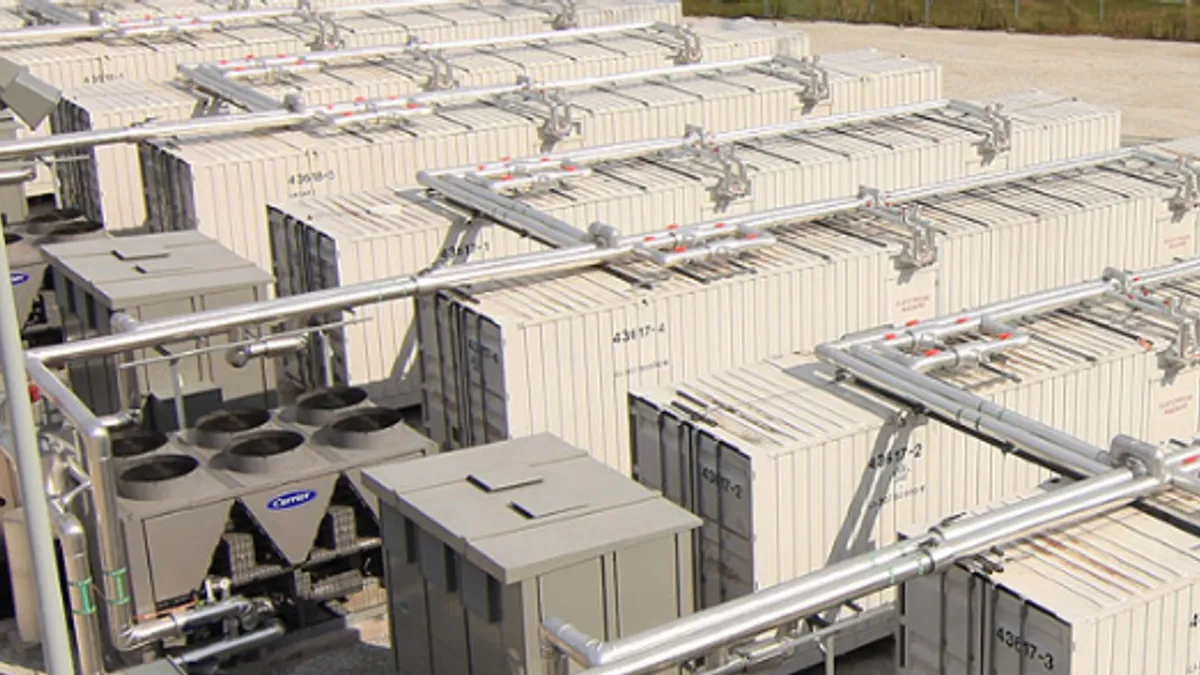Dive Brief:
-
There is a window of opportunity now for combining energy storage with renewable energy projects such as wind and solar farms, but could close if wind and solar costs fall further, according to a new study from the Massachusetts Institute of Technology (MIT).
-
The study finds that at today’s prices storage systems make economic sense in some locations, but not yet in others.
-
The demonstrates how to evaluate storage technology choices, including batteries, pumped hydroelectric storage, and compressed air energy storage.
Dive Insight:
Combining energy storage with renewable resources, especially solar panels, has been touted an inevitable combination or as an alternative to the elimination of incentives such as net metering. A new study by MIT finds that storage can make economic sense in today’s market in some instances, but that the opportunity might not last.
The MIT researchers found that as the cost of wind and solar power systems comes down, the cost of storage systems will need to come down as well or they will no longer be profitable because at some point it would be more profitable to simply add more generating capacity rather than more storage capacity.
The study, by Jessika Trancik, the Atlantic Richfield Career Development Assistant Professor of Energy Studies at MIT, and graduate students William Braff and Joshua Mueller, was published in the journal Nature Climate Change.
In Texas for instance, pumped hydro systems can provide additional value for solar or wind installations. The increased revenue the owners could make by storing power and then selling at peak prices would exceed the costs of the added storage system, according to the study.
Research on storage systems for renewable energy sources has primarily focused on using the systems to smooth out the intermittent outputs to better match fluctuating demand, the researchers noted. But what matters to potential investors is the price curve rather than the demand curve, since most of these wind or solar farms are feeding into the grid.
Whether an energy storage system is worth the cost today varies widely by location,the researchers point out, because of large variations in the frequency and magnitude of spikes in the price, and the intermittent nature of solar and wind resources. But the cost characteristics of the optimal storage systems are similar in all locations, the researchers found, because of particular common properties of electricity price fluctuations.
“This means that these results can be used to inform investments in storage technology development by the private sector and government, and can inform engineering efforts in the lab,” Trancik said.
The researchers also found that the costs of storage systems are not yet profitable enough without policy support to enable the kind of widespread adoption that is needed to make a large dent in global greenhouse gas emissions. But, Trancik says, this study does suggest that market adoption already makes sense in some locations, and could be boosted with modest public policy support, which in turn would stimulate technological improvement in storage to encourage further growth.













